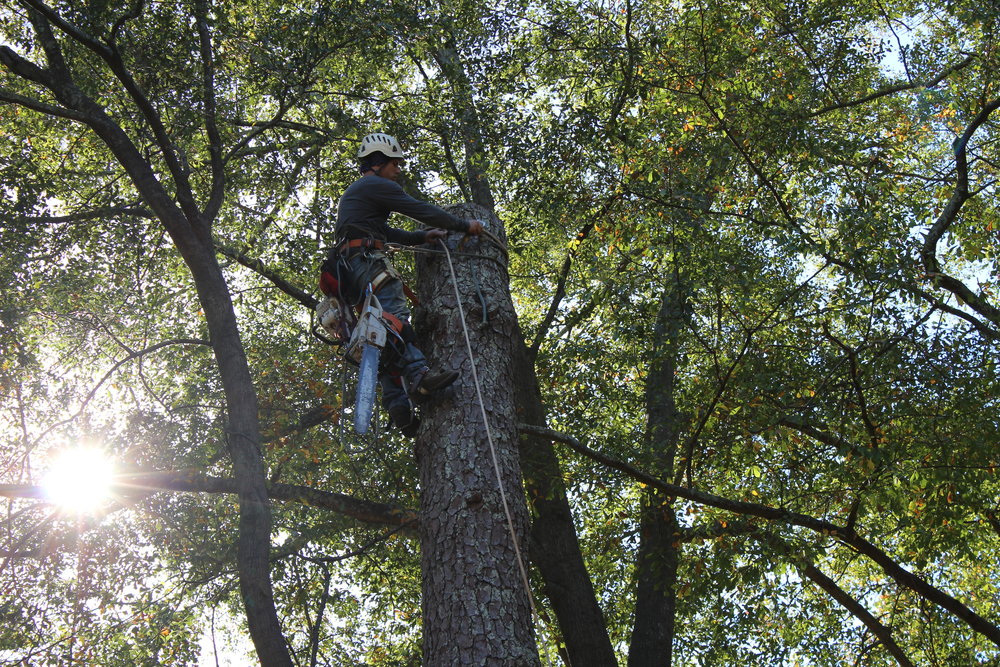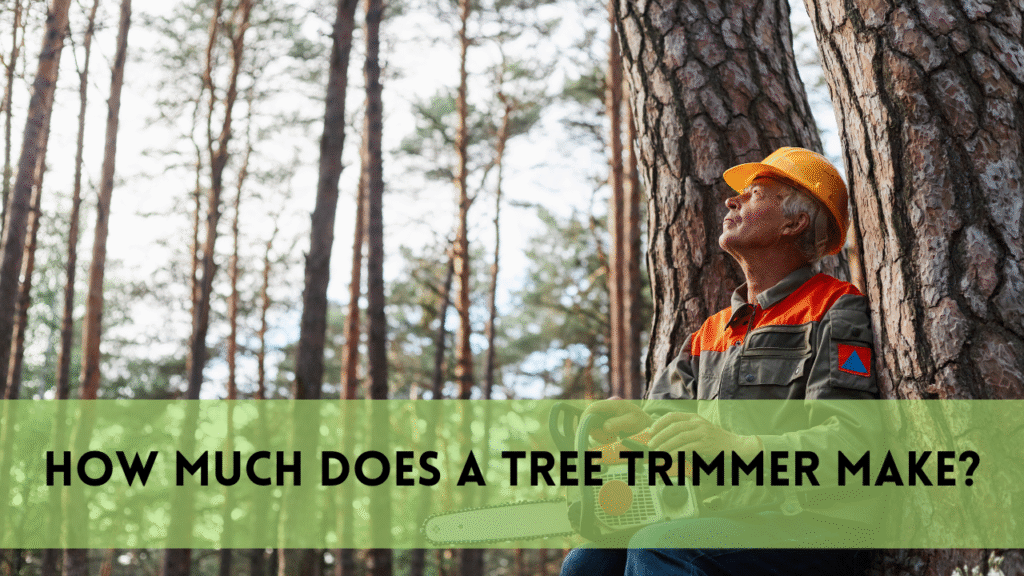Palm trees have a compelling and timeless charm that adds to the visual value of any landscape. Proper trimming, on the other hand, is crucial for keeping them looking their best and ensuring their overall health. This procedure necessitates the use of specially specialized tools. In this post, we’ll delve into the realm of palm tree trimming tools, providing insights, ideas, and advice to help you keep your own tropical paradise in good shape.
The Importance of Palm Tree Trimming
Palm trees are not just ordinary trees; they are a symbol of luxury and natural beauty. With their iconic fronds and picturesque silhouettes, palm trees are often the focal point of any landscape. To keep these natural treasures in their best shape, regular trimming is essential. Proper trimming not only enhances their visual appeal but also contributes to their overall health.
Types of Palm Tree
Palm trees come in a variety of species, each with its own set of traits and growth patterns. The first step in providing proper palm tree care is identifying the species. Different palm trees necessitate different ways of trimming, so understanding your tree’s individual requirements is critical. The Date Palm, Canary Island Date Palm, and Queen Palm are all common palm tree species. Understanding these distinctions can help you select the best tools and strategies for your palm tree.
Essential Palm Tree Trimming Tools
Trimming palm trees demands a specific set of tools to ensure the job is done efficiently and without harming the tree. Here’s a list of essential tools you’ll need:
1. Pruning Saw:
Pruning saw blades are available in curved, straight, and serrated varieties. A curved blade is frequently recommended for palm tree trimming because it allows for more efficient cutting around the fronds.
Blade Length: The length of the blade is important. Longer blades are beneficial for dealing with taller palm trees since they provide a greater reach.
Teeth Per Inch (TPI): The TPI of the blade determines its cutting effectiveness. A higher TPI produces smoother cuts, whereas a lower TPI allows for faster cutting through thicker branches.
Ergonomic Handle: Look for a pruning saw with an ergonomic handle. This feature improves grip and decreases hand strain during lengthy use.
2. Loppers:
Loppers have two cutting mechanisms: anvil and bypass. Bypass loppers are ideal for cutting live fronds because they make clean, precise cuts. Anvil loppers, on the other hand, are ideal for removing dead or woody fronds since they have more cutting force.
Longer handles provide more leverage and reach, making it easier to trim those difficult-to-reach fronds. However, keep in mind the weight, as longer handles can become uncomfortable.
Gearing system: Some loppers have a gearing system that multiplies cutting force, minimizing your effort. This is especially handy when dealing with heavier branches.
3. Hand Pruners:
Blade Material: The blades of hand pruners should be sharp and made of high-quality materials, such as carbon steel. This ensures clean and precise cuts while also ensuring longevity.
Cutting Capacity: Hand pruners come in a variety of sizes with differing cutting capacities. Choose one that is appropriate for the thickness of the fronds you wish to trim.
Locking Mechanism: Look for hand pruners with a secure locking mechanism to keep the blades closed when not in use, improving safety during storage.
4. Climbing Equipment:
Safety Harness
A full-body safety harness should be adaptable, comfortable, and have durable buckles. It must be appropriate for your climbing style, whether single-line, double-line, or saddle.
Climbing Rope: Choose a dynamic tree-climbing rope. These ropes absorb shock, minimizing the impact of unexpected stops during a fall.
Climbing Helmet: A climbing helmet should be both safe and ventilated. For prolonged periods of use, comfort and fit are critical.
Safety tools
Gloves: Select gloves that provide a good blend of protection and dexterity. They should be robust enough to prevent blisters and guard against sharp fronds, but not so bulky that they impede your movements.
Protective Eyewear: Safety glasses or goggles are required to protect your eyes from falling debris. They should be clear, anti-fog, and comfortable to use for extended periods of time.
Helmet: A climbing helmet should fit snugly and have an adjustable chinstrap. It should be certified to safety requirements in order to provide optimum head protection.
Fit and Adjustment of a Safety Harness A well-fitting safety harness distributes your weight evenly and prevents pain during long climbs. Proper adjustment is critical for safety.
Attachment Points: Look for harnesses with several attachment points. These allow you to carry important equipment and position yourself correctly while climbing.
Rope
Climbing ropes should be made of durable materials, such as polyester or aramid fibers, to offer strength and abrasion resistance.
Diameter: The diameter of the rope should be appropriate for your climbing equipment and personal preferences. Thicker ropes are more durable, while thinner ones are lighter and easier to handle.
Length: Select a rope length appropriate for the height of the palm trees you’ll be cutting. Extra length can be advantageous for a variety of climbing strategies.
Wheelbarrow:
Consider the type of wheels used on the wheelbarrow. Pneumatic tires provide a more comfortable ride over rugged terrain, whereas solid tires are puncture-resistant and require little maintenance.
Wheelbarrows are available in a variety of capacities, ranging from 2 to 10 cubic feet. Choose one that can handle the volume of fronds and debris you’ll be dealing with.
Handles: ergonomic handles improve the comfort of pushing and maneuvering the wheelbarrow. Padded handles are available on some wheelbarrows for increased comfort.
How to Trim a Palm Tree?
- Trimming a palm tree is a precise operation. To ensure a successful trim, follow these steps:
- Examine the tree’s health and locate the fronds that need to be clipped.
- Climb the tree safely using the appropriate equipment.
- Begin trimming at the bottom and work your way up.
- Cut the fronds close to the trunk, leaving a short stub.
- Over-trimming can injure the tree.
- After trimming, clean up the area by removing any dirt and cutting fronds.
Trimming vs. Pruning
It’s critical to understand the difference between pruning and trimming. Trimming is the removal of dead or undesirable fronds for purely cosmetic purposes.
Pruning, on the other hand, focuses on eliminating sick or damaged fronds in order to promote the health of the tree. Understand when to use each strategy to efficiently maintain your palm tree.
The Advantages of Proper Trimming
Palm tree trimming offers various advantages. It improves the tree’s look, minimizes disease risk, and helps it devote more nutrients to healthy growth. The use of the appropriate instruments contributes greatly to these benefits.
Maintaining Your Trimming Tools
Quality tools are an investment in your palm tree’s health. Learn how to clean, sharpen, and store them properly to ensure they last for many trimming sessions.
Hiring a Professional vs. DIY
Deciding whether to trim your palm tree yourself or hire a professional can be a dilemma. We’ll compare the pros and cons of each approach, helping you make an informed choice.
Best Practices for Trimming
Discover the best practices for successful palm tree trimming. From assessing the tree’s health to cleaning up after the job, following these guidelines will lead to a pristine paradise.
FAQS
Q1. How frequently should I prune my palm tree?
Trimming frequency is determined by the tree’s growth rate, but once a year is usually adequate.
Q2: Can I trim palm trees with ordinary garden tools?
It is advised that you use professional palm tree trimming tools for the greatest results and safety.
Q3: When should you prune a palm tree?
Trimming should be done in the late winter or early spring.
Q4: What should I do with the fronds and branches that have been cut?
You should properly dispose of them or try recycling them as mulch.
Q5: Is it illegal to trim palm trees?
There may be restrictions in some places, so check with your local authorities before trimming.
Conclusion
To summarize, the art of palm tree trimming requires precision, understanding, and the proper instruments. You can maintain your palm trees successfully and safely with a properly selected arsenal of pruning saws, loppers, hand pruners, climbing gear, safety gear, and a reliable wheelbarrow. By taking into account the individual features and applications of each tool, you can ensure a successful palm tree trimming project that improves both the aesthetics and the health of your prized palm trees.




